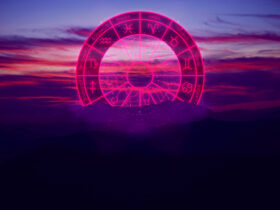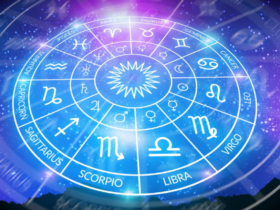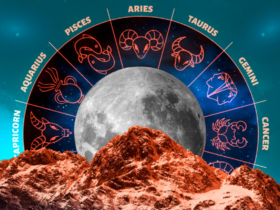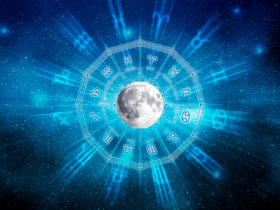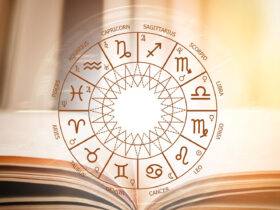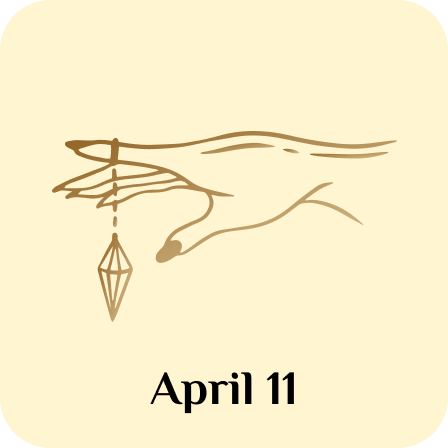
Mercury’s maximum eastern elongation reached
Mercury will be seen again on April 11th, when it reaches its maximum eastern elongation. Just after sunset, Mercury will be 19.5 degrees from the Sun at an ideal point above the horizon.
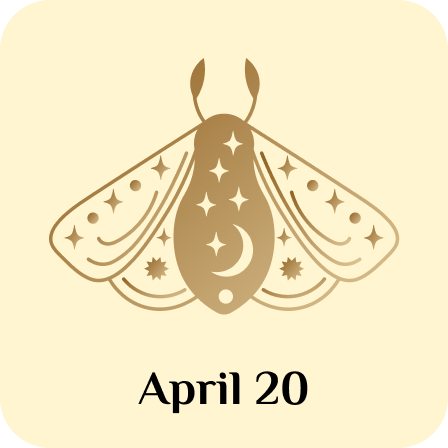
Hybrid solar eclipse occurrence
A hybrid solar eclipse is a rare phenomenon that happens when the Moon is very close to the Earth. The curve of the Earth means that in some places, a total eclipse event is created, while in others, people can see an annular eclipse (a visible rim of light). It all depends on where you are in relation to the central eclipse path. On April 20th, the eclipse path will begin in the southern Indian Ocean.
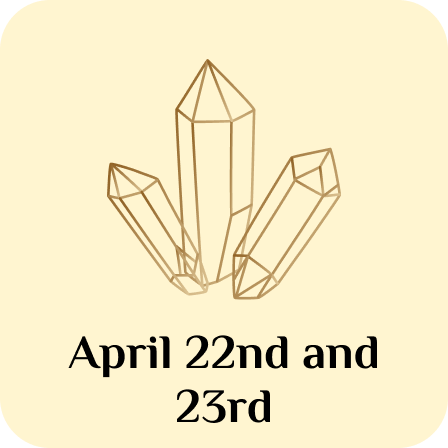
Peak of the April Lyrids meteor shower
The April Lyrids meteor shower occurs from April 16th to April 29th, reaching its peak of intensity on the 22nd and 23rd at around 20 meteors per hour (though uncommon surges during the Lyrids can sometimes bring this up to 100 meteors per hour!). These meteors, known to create glowing dust trails, are the brightest from the Lyra constellation and are produced by comet C/1861 G1 Thatcher.
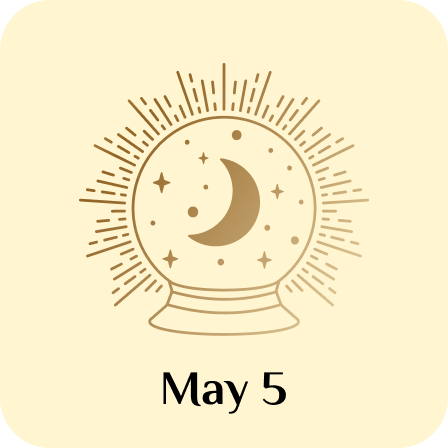
Penumbral lunar eclipse occurrence
A penumbral lunar eclipse occurs when the Earth’s outer shadow falls over the Moon. Since the Moon’s color is only slightly affected, it’s sometimes mistaken for a regular full moon. The May 5th penumbral lunar eclipse will be seen in Africa, Asia, Eastern Europe, Greece and Oceania.
Related: Celebrity Signs - The Good, The Bad and The Ugly
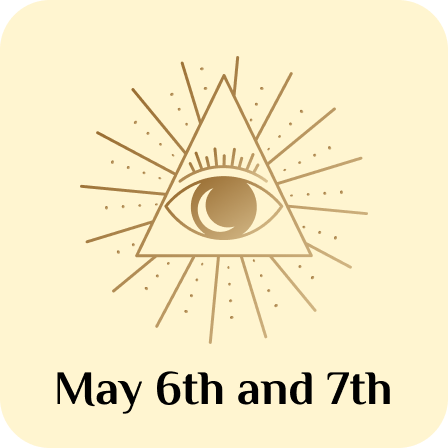
Peak of the Eta Aquariids meteor shower
The Eta Equariids meteor shower spans over a month, from April 19th to May 28th. At the shower’s peak on May 6th and 7th, up to 60 meteors an hour can be produced. These meteors originate from the Aquarius constellation and are produced by the 1P/Halley periodic comet. The coinciding full moon will obscure dimmer meteors.
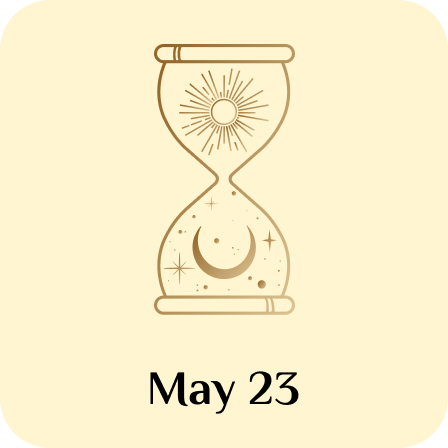
Venus, Mars and the Moon’s triangle
On May 23rd, three planets will align in the sky to create a beautiful triangle – Venus, Mars and the Moon. The evening is the ideal time to view this celestial conjunction.

Mercury’s maximum western elongation reached once again
Mercury will return to visibility on May 29th when it reaches its maximum western elongation of 24.9 degrees from the Sun. Mercury will be at its ideal point above the horizon just before dawn.
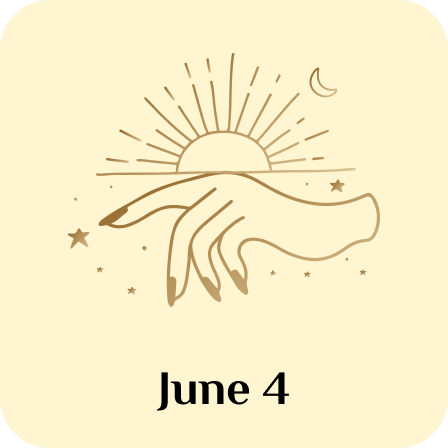
Venus’s maximum eastern elongation reached
Venus will shine brighter than ever on June 4th, when it reaches its maximum eastern elongation of 45.4 degrees from the Sun. The best time to gaze at the planet is when it glitters in the evening sky at its ideal point above the horizon.
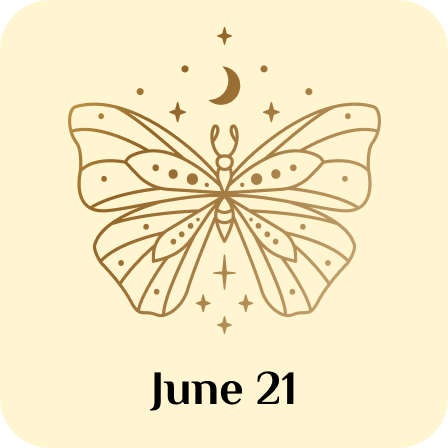
Summer solstice
On the summer solstice, the northern hemisphere basks in the sun’s light for more than 15 hours and the official beginning of summer is marked (in the aforementioned northern hemisphere – over in the southern hemisphere, winter begins). The summer solstice is the longest day of the year, and on this day, June 21st, the Earth’s north pole reaches its maximum tilt toward the sun.
Speak to a live horoscope expert. Find clarity, connection and a path forward.
CLICK HERE AND START YOUR READING!
Related: Celebrity Signs - The Good, The Bad and The Ugly
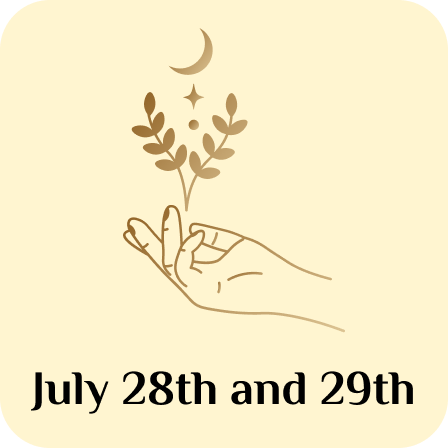
Peak of the Delta Aquariids meteor shower
The Delta Aquariids meteor shower will last over a month, from July 12th to August 23rd. The shower’s peak, at 20 meteors per hour, will happen on July 28th and 29th. Delta Aquariids meteors come from the constellation of Aquarius, and though it’s not fully confirmed, they are suspected to originate from Comet 96P Machholz. The near-full Moon will obscure dimmer meteors.
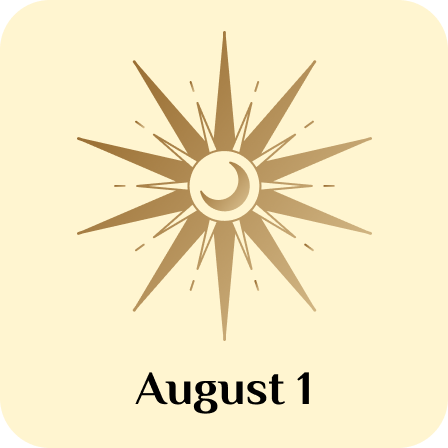
Early August supermoon
When the Moon’s full phase coincides with its perigee (a term for the Moon reaching its closest point to the Earth in its elliptic orbit), a larger-than-usual full moon is created. This is dubbed a “supermoon.” There are three supermoons to enjoy in 2023, and August 1st is the first.

Peak of the Perseids meteor shower
The Perseids meteor shower lasts from July 17th to August 24th, reaching a peak of 60 meteors per hour on August 12th and 13th. Perseid meteors originate from the constellation Perseus and are associated with the Swift-Tuttle comet. The Moon will be waxing during the night of the shower’s peak, so it shouldn’t cause significant visibility issues for stargazers.
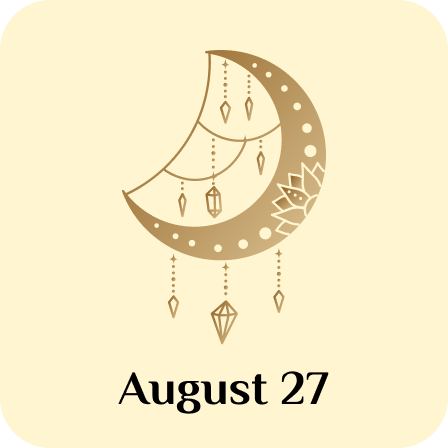
Saturn at opposition
When the Earth comes between the Sun and another planet, this is known as an “opposition.” On August 27th, Saturn will be at opposition. It will reach its closest point to the Earth, entirely illuminated by the Sun, and will therefore be brighter than ever in the sky, visible with a telescope.
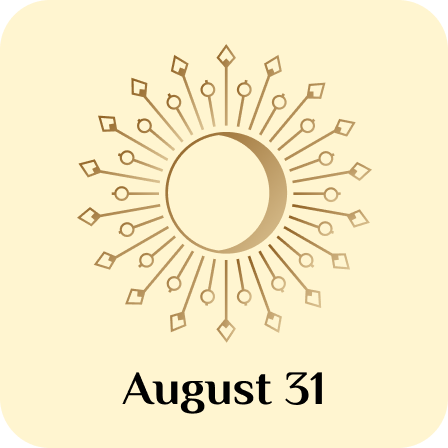
Late August supermoon
August 31st marks the second occurrence of a supermoon in 2023. The moon reaches fullness as it reaches its perigee, and the results are delightful to witness.
Related: Celebrity Signs - The Good, The Bad and The Ugly

Neptune at opposition
On September 19th, not long after Saturn, Neptune will be at opposition. Neptune will be as close to Earth as possible, most visible around midnight in the constellation Pisces. Due to Neptune’s size and distance from earth, you’ll need a powerful telescope to spot the planet – even in its brightest, closest state.
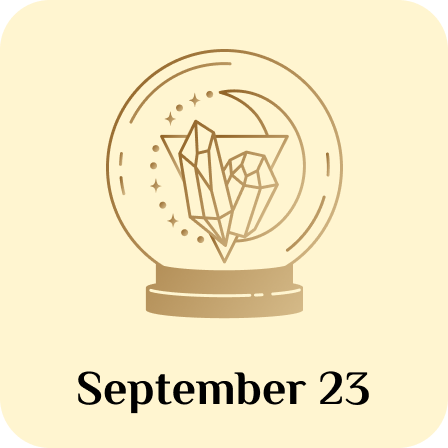
The second vernal equinox (autumn equinox)
September 23rd marks the autumn equinox in the northern hemisphere, the second vernal equinox of 2023. (In the southern hemisphere, September 23rd is the spring equinox.) The equinox will occur at quarter to seven in the morning (UTC), the Sun will cross the celestial equator, and autumn will officially begin.
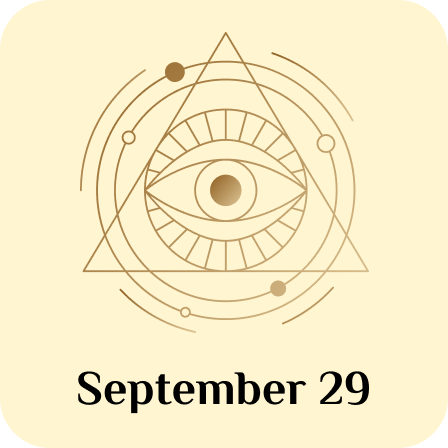
September supermoon
The final supermoon of 2023 occurs on September 29th, not too long after the first two. The Moon becomes full as it reaches its perigee, and a supermoon is created in the sky above.
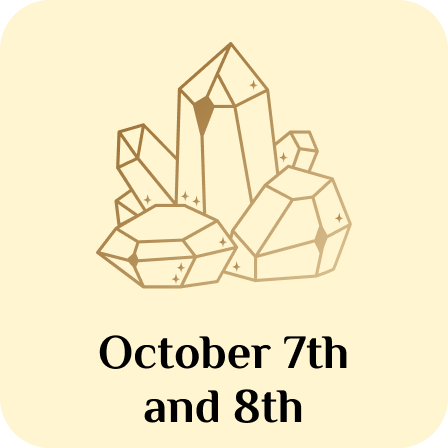
Peak of the October Draconids meteor shower
The Draconids meteor shower is short, active from October 6th to October 10th and peaking on the 7th and 8th at around 10 meteors an hour. Draconid meteors come from the Draco constellation and are produced by the periodic comet 21P/Giacobini-Zinner. The Draconids are best viewed in the early evening rather than the early morning.
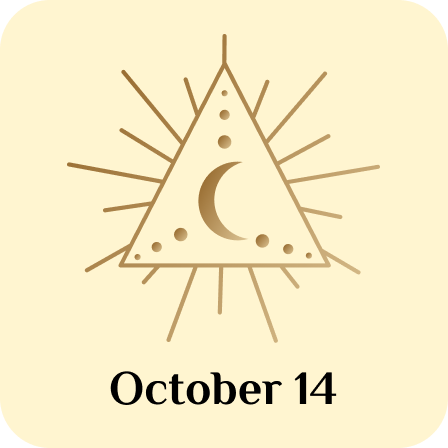
Annular solar eclipse occurrence
An annular solar eclipse (an eclipse in which the Moon obscures the Sun, but a rim of light still appears – so it’s not quite a total eclipse) will occur on October 14th for a maximum of five minutes and 17 seconds.
Related: Celebrity Signs - The Good, The Bad and The Ugly
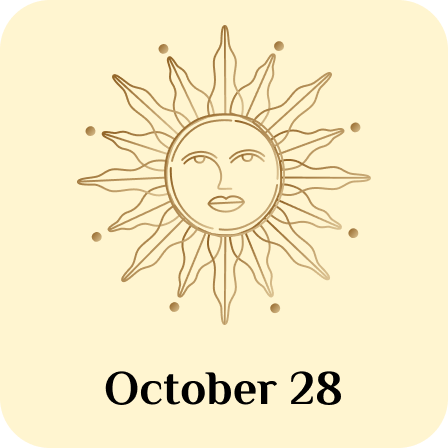
Partial lunar eclipse occurrence
When the Moon passes through the Earth’s partial shadow, it causes a partial eclipse. A partial lunar eclipse will occur on October 28th, just a few days before Halloween. It will be visible in Africa, Asia, Europe and Western Australia.

Jupiter at opposition
On November 3rd, Jupiter will be at opposition. It will reach its closest point to the Earth and be fully lit by the sun, creating ideal conditions for observation. All night, Jupiter will be visible through a telescope – right down to its cloud bands and its four largest moons!

Peak of the Taurids meteor shower
The Taurids meteor shower lasts from September 10th to November 20th. The Taurids peak on November 4th and 5th at five to 10 meteors per hour. Meteors come from the Taurus constellation and are produced by two separate sources, as they are two combined showers. The Southern Taurids come from Comet Encke, and the Northern Taurids come from the 2004 TG asteroid.
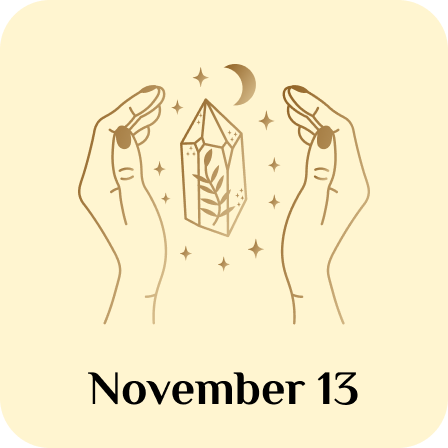
Uranus at opposition
Soon after Jupiter, Uranus will be at opposition on November 13th, bigger and brighter than usual when viewed from the Earth. However, since Uranus is so far from the Earth, it will still only be a dot seen through a powerful telescope.
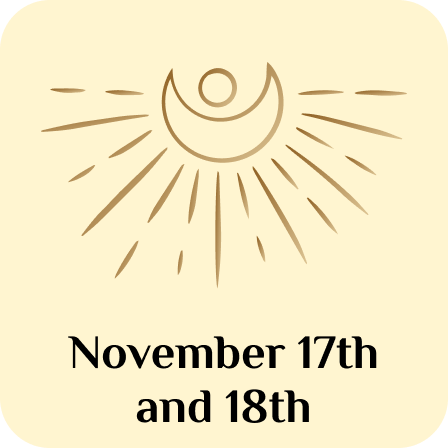
Peak of the Leonids meteor shower
The Leonids meteor shower runs from November 6th to November 30th, peaking on the 17th and 18th of the month at up to 15 meteors per hour. Leonid meteors come from the Leo constellation and originate from the Temple-Tuttle comet. Approximately every 33 years, the Leonids create a spectacular meteor storm during which hundreds of meteors fall in an hour (the last was in 2001).
Related: Celebrity Signs - The Good, The Bad and The Ugly

Peak of the Geminids meteor shower
The Geminids light up the sky from December 4th to December 17th, peaking on
the 13th and 14th. You can see 120 to 160 meteors per hour at peak in ideal
viewing conditions. Astrologists believe that the Geminids are intensifying each
year. Geminid meteors come from the Gemini constellation and are produced by
the object 3200 Phaethon (which is most likely a Palladian asteroid).
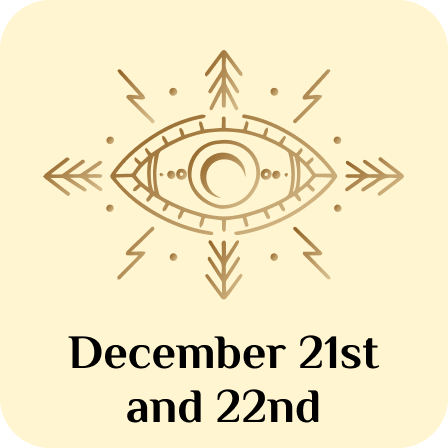
Peak of the Ursids meteor shower
The Ursids meteor shower usually lasts a little over a week, from around December 17th to December 26th. The shower’s peak occurs on December 21st and 22nd, and stargazers can expect to spot five to 10 meteors per hour. Ursid meteors come from the Ursa Major constellation and are possibly produced by the 8P/Tuttle Comet.
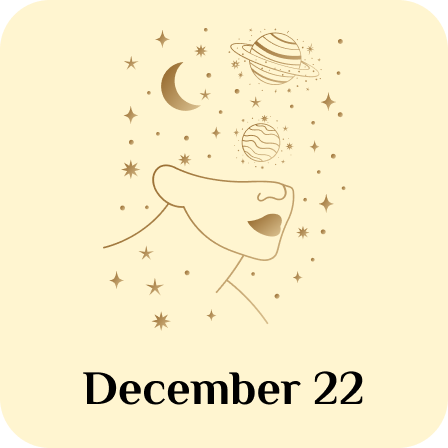
Winter solstice
On the winter solstice, the northern hemisphere experiences just eight hours of daylight and the official beginning of winter is marked (in the aforementioned northern hemisphere – over in the southern hemisphere, summer begins). The winter solstice is the shortest day of the year, and on this day, December 22nd, the Earth’s south pole reaches its maximum tilt away from the sun.
